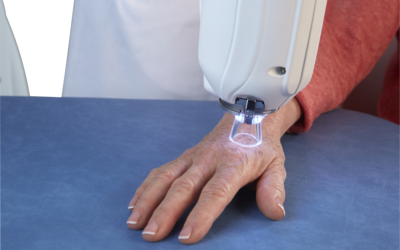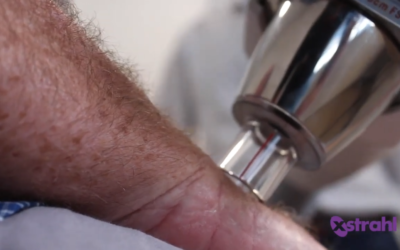The ultimate goal of radiation therapy has always been to eradicate tumors locally while preventing damage to the surrounding tissue. New technologies aim to make treatment even more precise, while allowing clinicians to better plan treatment strategies and adapt to anatomic changes.
Shrinking systems
Radiotherapy systems for certain cancers are also getting smaller.
Xstrahl recently submitted for FDA 510(k) clearance for an 80-kV continuous wave X-ray system for treating skin cancer. The low-cost system is mobile and doesn’t need as much radiation shielding as larger systems.
The smallest system the company sells is a 100-kV system, which starts at 10 kV. It also markets 150-kV and 200-kV systems that both start at 20 kV, and a 300-kV system that starts at 40 kV. All vary in how deep the radiation beam can penetrate the skin.
In the U.S., the 100-kV and 150-kV systems are the most common, while 200-kV systems are more common throughout the rest of the world.
“Most patients coming in will not need treatment to go that deep,” says Adrian Treverton, chief operating officer of Xstrahl, Inc. “In the U.S., there’s more awareness of skin cancer and people tend to be diagnosed by their dermatologists a lot earlier.”
The company has been continuously improving the user interface and software of its systems, adding patient imagery to view the treatment area and changing the database, and it has introduced a dose planning system that is currently available in Europe and Canada.
A 10-year life span is fairly standard for most systems, Treverton says, and software is designed to improve workflow as facilities work to keep their investments up to date.
“Now, we’re looking at a better way for the physicists and the radiation technologists to interact with the machine,” Treverton says.






